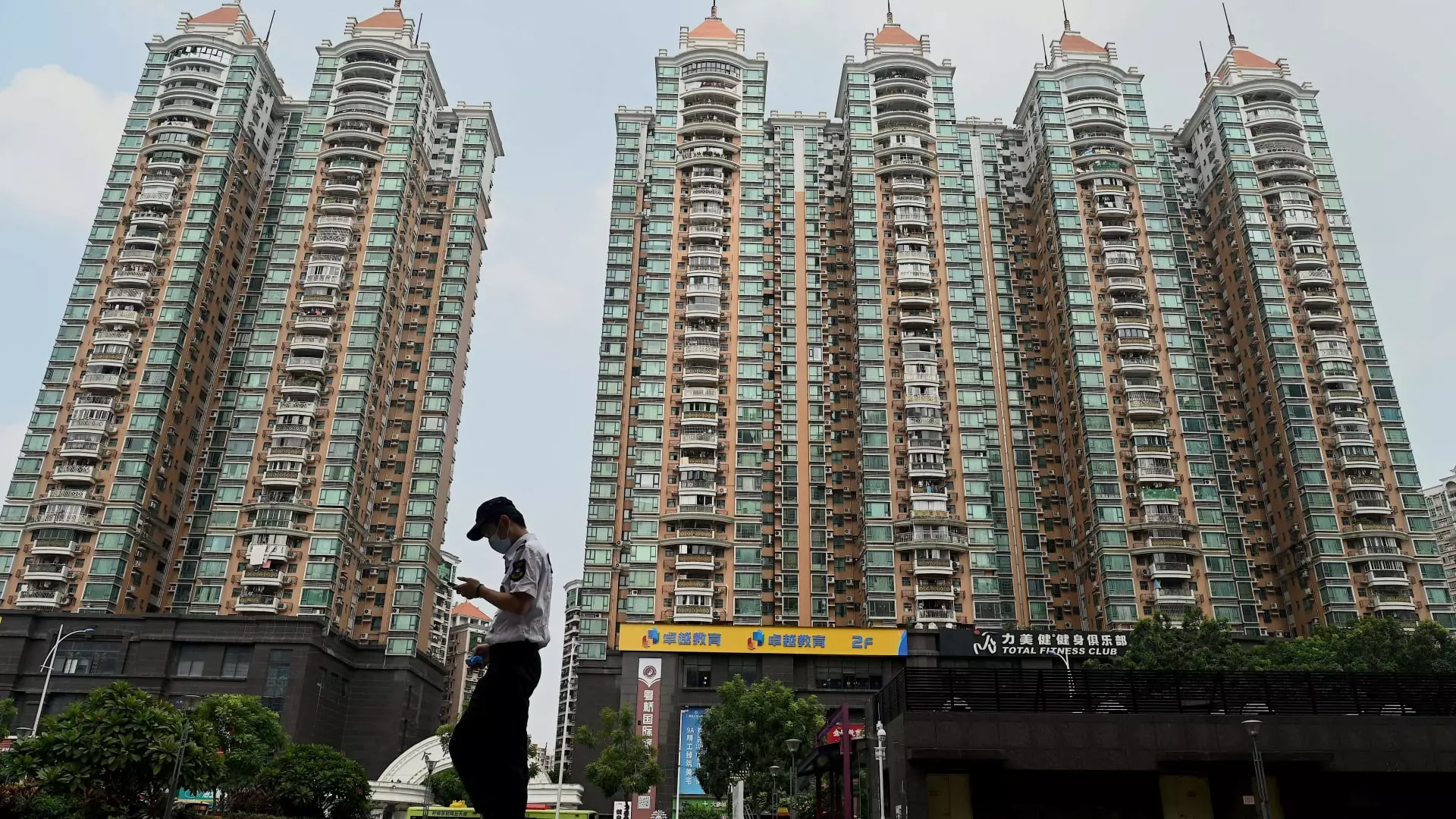The ever-fluctuating landscape of China’s real estate sector has once again generated attention as multiple metropolitan areas introduced significant policy adjustments aimed at enhancing homebuyer enthusiasm. The latest easing measures come in response to a series of economic stimuli from the Chinese central bank, sparking a notable rally in the shares of property developers. As a keen observer of market trends, it’s crucial to analyze the reasons behind these changes, their implications for the broader economy, and the potential effectiveness of such measures.
In a bold move, the Guangzhou municipal government announced the elimination of all existing home purchase restrictions. Previously, migrants had to adhere to tax requirements for six months to be eligible for purchasing up to two properties, while single individuals faced limitations to owning just one. The amendments, effective immediately, stand to create a more favorable environment for prospective homebuyers. Similarly, the Shanghai government has reduced the mandatory tax-paying period to just one year, down from three, and adjusted down-payment ratios to a competitive 15% for first homes and 25% for second purchases.
Furthermore, Shenzhen has tweaked its restrictions, permitting local families to own an additional property in specific areas, alongside allowing families with at least two children to acquire two homes instead of one. This progressive approach aims to stimulate demand in a market characterized by sluggish sales, providing a potential lifeline to struggling developers.
Market Reactions and Performance Indicators
The market’s response to these changes has been overwhelmingly positive. The Hang Seng Mainland Properties Index soared by 8.36% on Monday, continuing a rally that had already seen a more than 30% increase the previous week. The stocks of major developers, such as Longfor Group Holdings and Hang Lung Properties, experienced substantial gains, indicating renewed investor optimism. The overall mainland CSI 300 surged by 6%, marking a significant rebound after a prolonged period of downturn.
This encouraging market performance indicates a potential recovery path for the beleaguered real estate sector. However, analysts like Allen Feng from Rhodium Group caution that while first-tier cities like Beijing and Shanghai may see a more pronounced impact from these measures, similar strategies may not yield the same results in smaller cities burdened with excess inventory.
Challenges Ahead for the Real Estate Sector
Despite these positive developments, significant challenges remain. The Chinese real estate market has endured several years of decline, primarily due to stringent regulations aimed at curbing rampant borrowing and speculation since 2020. The slower-than-anticipated recovery and easing measures have historically failed to create meaningful turnarounds, and experts like Gary Ng from Natixis emphasize that while stabilization is possible, a robust recovery may prove elusive, particularly in less prosperous cities.
Additionally, the central government’s ongoing effort to rebuild confidence in the housing market necessitates addressing the issue of incomplete construction projects. Leverage on unfinished and abandoned properties may be essential in restoring buyer trust and generating sustained demand. Erica Tay from Maybank Investment Banking Group highlights that a mere 4% of the total floor space under construction in 2023 has been completed, suggesting an urgent need for policy action in this area.
While recent measures indeed present a glimmer of hope for China’s property developers and potential homebuyers alike, one cannot overlook the broader economic implications intertwined within this narrative. The real estate sector remains a linchpin of China’s economic health, historically contributing over a quarter of its GDP. However, as the government continues to grapple with internal market dynamics, the results of these easing measures may take time to materialize.
The recent easing of home purchase restrictions in China’s major cities catalyzes a crucial moment in the real estate market. While optimism abounds amid substantial market gains, the essential focus should extend beyond immediate financial recovery. Long-term stability will require systemic changes addressing existing challenges, including unfinished projects and debt management, ensuring that the path to recovery is not only swift but also sustainable.

